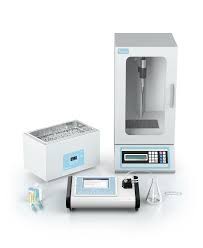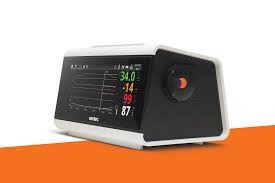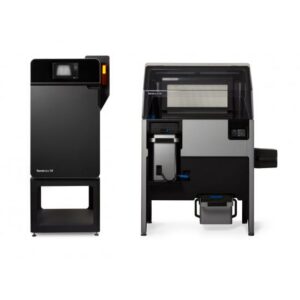
Miris HMA breast milk analyser. Price: €36,570.72 (including VAT).
Department: Neonatology and Paediatric Intensive Care
Breast milk is the best food for all children. In the treatment of premature babies, it is a very important cornerstone of health. Premature babies require more nutrients than full-term babies to grow and recover, and the nutritional value of breast milk changes over time. Therefore, it is necessary to ‘enrich’ breast milk by adding protein, fat and carbohydrates at some point.
Previously, breast milk was enriched using the ‘blind method’, whereby premature babies received a standard amount of breast milk fortifier. However, this method carries a high risk of underfeeding or overfeeding the baby. Miris HMA® uses 1 ml of breast milk to determine its protein, fat, carbohydrate and energy content. This allows breast milk to be enriched individually, providing exactly the right amount of additional nutrients. This individualised approach ensures stable growth for every premature baby.

Skin-surface carbon dioxide meter SenTec tCOM+. Price EUR 20 471,60 (incl. VAT) + accessories EUR 2921.90
Department: general paediatrics and neurology
The device is necessary for the rapid assessment of respiratory function in patients with muscle disease and other neurological patients, in order to plan their non-invasive ventilation needs. According to neurologists, the estimated number of patients for whom the SenTec tCOM device will be used could be around 50, and they will be scheduled twice a year.
There is also an active development of the infant sleep clinic at the University of Tartu Hospital and the device can be used to perform sleep studies, or polysomnography, on patients.
Video tracking system for speech therapists. Price EUR 2049.
The Centre for Child and Adolescent Development and Rehabilitation at the University of Tartu Children’s Hospital lacks a digital viewing facility where parents can monitor the speech therapist and their child’s activities on a tablet computer during the consultation/therapy without being present in the office at the same time. The presence of the parent in the office often reduces the children’s willingness to co-operate, while the use of digital viewing is the best way to ensure the child’s willingness to co-operate and the parent can follow the activities in real time.
The use of digital monitoring helps the parent to be more aware of problems and to move towards more appropriate help. It further involves the parent in teamwork, speeding up the achievement of the therapy goals. It also creates modern, innovative conditions for the supervision of speech and language therapy students at the University of Tartu, with the possibility of recording therapies to help the students in their supervision and to help them analyse their own work.

Fuse 1+ 30W 3D printer for producing orthoses and arch supports. Price: €83,000.
Location: Haapsalu Neurological Rehabilitation Centre (HNRK)
HNRK and the HNRK Assistive Technology Centre aim to produce custom-made orthoses (mainly hand or foot orthoses and arch supports) and occupational therapy aids for children in a short period of time. Ideally, this would involve performing diagnostics at the beginning of the hospital stay and providing the aid before the patient leaves the hospital. Introducing 3D printers would help increase productivity without compromising quality. Since the orthoses will continue to be made individually by orthotists, only the technology will change, so there will be no noticeable changes to the process or complications when purchasing orthoses at favourable rates from the state. Similarly, the cost of manufacturing orthoses will not differ significantly from the current cost. The main advantages are the speed and convenience of the process.
.Fuse 1+ 30W features:
– Faster production, which is particularly useful for reprints as there is no need to reset support structures or make other changes.
• The machine can operate unattended, even at night and at weekends, increasing productivity.
• The printing process is closed and powder-based, making it significantly cleaner than filament or resin printing.
– Fuse 1 uses SLS (selective laser sintering) technology to print complex shapes without support structures.
– Fuse Sift allows unused powder to be collected, cleaned and mixed with new powder, making the process more sustainable and cost-effective.
• Fuse Blast efficiently cleans printed parts and improves their surface finish.
• Strong and reliable parts: The materials used with the Fuse 1 are durable and suitable for producing functional end-use parts.
• Cost-effective introduction to SLS technology: Although more advanced SLS printers are available, they are significantly more expensive. The Fuse 1 strikes a good balance between price and performance.
——————
It is only thanks to the kind donors and supporters that these devices reach the children’s departments of the Hospital to save lives. You can help by making a donation to one of the Foundation’s donation accounts and indicating the name of the device the donation is intended.
SA Tartu Ülikooli Kliinikumi Lastefond
Swedbank IBAN EE682200221015828742
SEB IBAN EE261010220014910011
Luminor IBAN EE791700017000285384
LHV IBAN EE527700771000610813
Coop IBAN EE824204278603586607
